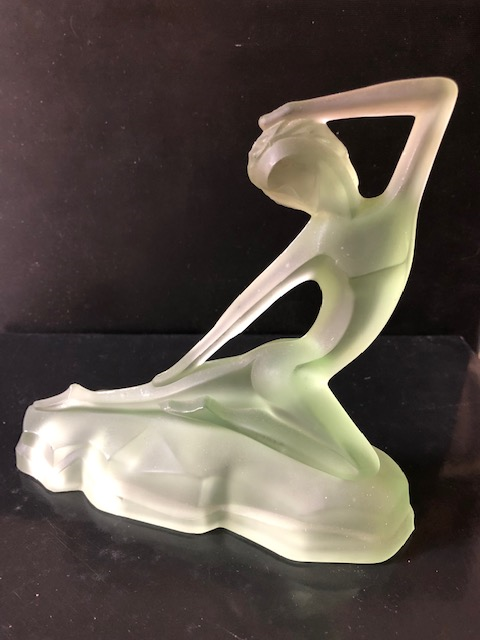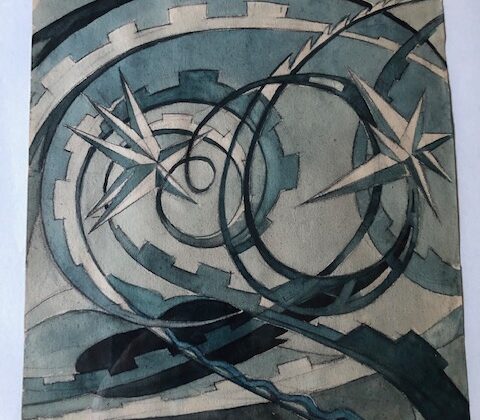Curt Schlevogt artistic Deco frosted glassware
Prof. Francesco Carelli

The American-born entrepreneur Curt Schlevogt established his own company focusing on exporting Jablonec pearls in 1928. In the following years, however, his enterprise also began intensively pursuing the production of artistic crystallery (minute applied glass objects made by molding or blowing). This was probably caused by his son, Henry Günther Schlevogt, who widely participated in introducing this type of production in the Jablonec export company A. Sachs & Co. as its representative in the United States.
At the 1934 spring fair in Leipzig, the company Schlevogt presented its collection of molded glass under the trademark “Ingrid”. The collection was open and gradually received new patterns. The most impressive ones from the artistic aspect were the result of the company’s collaboration with leading artists as were, for example, Ladislav Přenosil, Zdeněk Juna, František Pazourek, Artur Pleva, M. Petrucci, E. Rottenberg and many others. The collection was initially dominated by toilet and flacon sets and later also by smoking implements, glass sculptures, vases, lamps, liquor sets, devotional articles and minute glass objects. The company gained fame and favor of glass lovers mainly by fashionable glass materials jade, jade turquoise and lapis lazuli from which significant part of the collection was mould in the Josef Riedl glassworks in Polubný.
Supreme example of artistic endeavors of the Schlevogt company was its catalogue “Artistic Crystallery – Ingrid” [Umělecká krystalerie – Ingrid], which included figural sculptures awarded by Grand Prix at the 1937 World Exhibition in Paris. It also presented small matted crystal figures, mould toilet sets with full-surface decoration and modeled plugs in jade and lapis. Amongst conventional models, referring to Art Nouveau and Rococo in style, dominated Functionalist designs or, eventually, variations in Art Deco style and designs by Bruno Mauder (vases, jars).
The successful development of the company was halted by the Second World War and the ultimate stroke came with its nationalization in 1945. Trademark of the Schlevogt company was a sticker bearing the inscription “Ingrid” and later also the name of the artist.
Photo: dancer Deco figure, satin green glass as malachite, about 1937.


